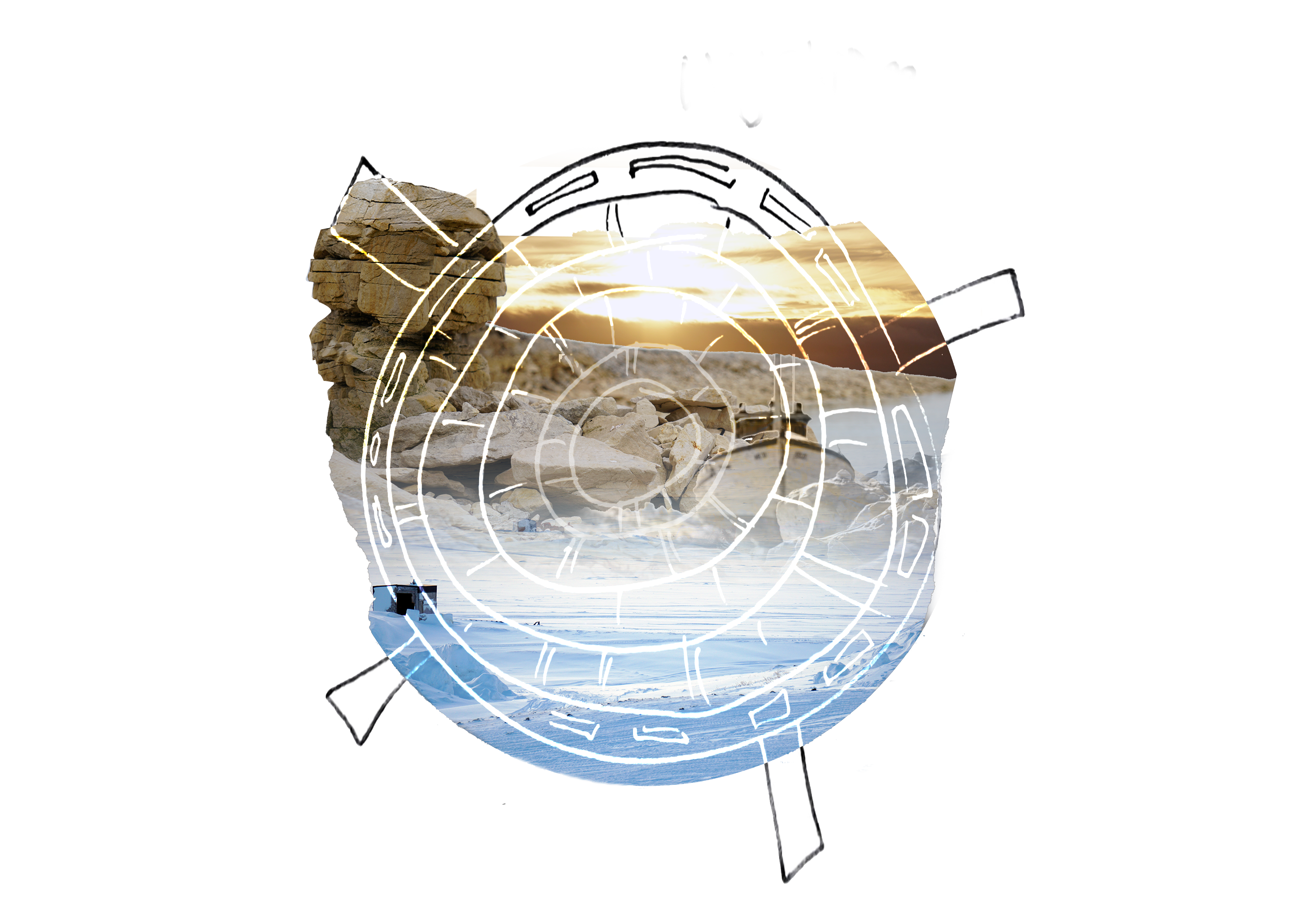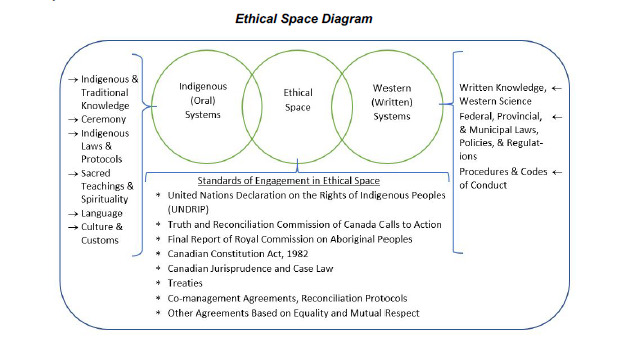Ethical Space of Engagement

You have found a vista. A vista is a site from which a particular view is offered. They allow for a prospective ethics, and to make meaningful decisions, when called upon. Vistas nevertheless do not provide all-knowing insights. They are partial perspectives that need to be reconsidered per series of events.
In this particular case, you are presented with the guiding principles of the ‘Ethical Space of Engagement’ (ESE), as proposed by Sturgeon Lake First Nation elder Willie Ermine (Ermine 2007).
The ESE, is a “third space” approach, through which differentiated nations or collectives might negotiate ethical encounters with each other in an ‘ethical’ space that belongs to neither. This third space emerges both through principled practices (like for example negotiating terms of engagement), and as a guiding model for willing partners to re-position themselves, so they can encounter each other from an equitable point of beginning(Ermine, 2007; Ermine 2015; Indigenous Circle of Experts 2018).
When taking the ESE as a guiding principle to ethical knowledge conciliation, ethics are no longer a pre-emptive box to tick nor a static end-goal, but rather performed as a practice that requires ongoing negotiation.
Figure 1: The Ethical Space Diagram, originally published by the IISAAK OLAM foundation (2019). Re-used with permission.
Becoming a wayfarer in this research entails a willingness on your part to become an active and immersed agent in the ongoing material opening and closing of for meaning-making. When looking out over this Vista, you wonder what it means in the thick moment/um of reconciliation to ethically engage with the experiences of Gjoa Haven community members in accordance with the guiding principles of a "third" space.

